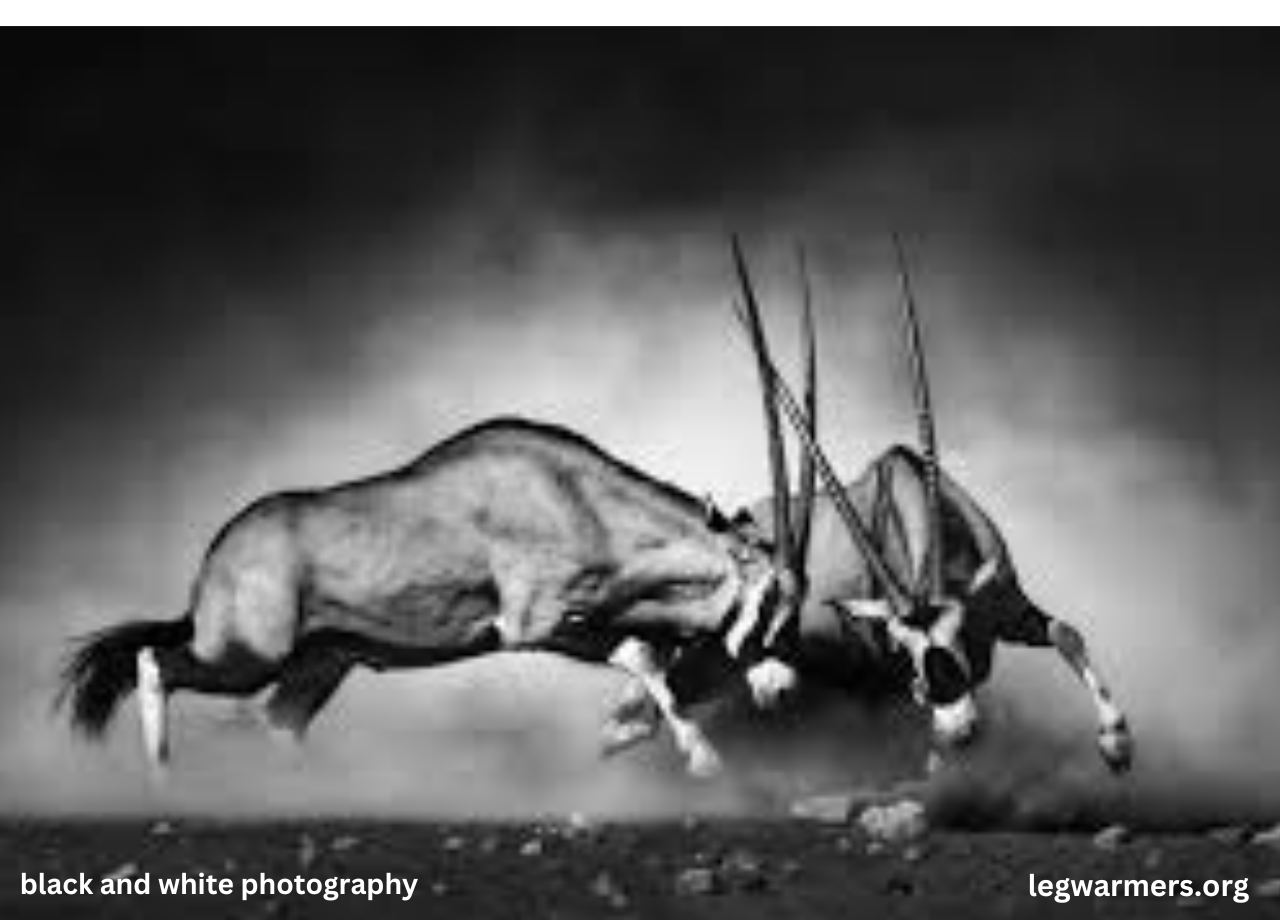Introduction to Black and White Photography
What is black-and-white photography?
Black and white photography strips away the vibrant colors of the world, leaving only shades of gray, black, and white. This form of photography focuses on the fundamental elements of an image—light, shadow, texture, and composition—creating a timeless and often more dramatic effect. Unlike color photography, where hues can sometimes distract, black-and-white photography directs attention to the core essence of the subject.
Table of Contents
Historical Significance and Evolution
The history of black-and-white photography is deeply intertwined with the history of photography itself. From the first daguerreotypes in the 19th century to the iconic works of photographers like Ansel Adams and Dorothea Lange, black and white photography has always held a special place in the world of visual arts. Initially, photographers had no choice but to work in black and white due to technical limitations. However, even after the advent of color film, many artists chose to continue working in black and white to create more impactful images.
Why Choose Black and White Over Color?
While color photography offers a wide spectrum of creative possibilities, black and white photography is often chosen for its ability to evoke strong emotions and emphasize the subject’s form and texture. It can add a sense of timelessness to a photograph, making it appear both classic and modern simultaneously. Additionally, black-and-white photography allows photographers to focus on the composition and lighting of the image without the distraction of color.
The Aesthetic Appeal of Monochrome Images
The Power of Contrast and Shadows
In black and white photography, contrast is king. The interplay between light and dark, known as chiaroscuro, creates depth and dimension in a photograph. High-contrast images, where there is a stark difference between the darkest and lightest areas, can create dramatic and eye-catching photos. Shadows, too, play a crucial role, adding mystery and intrigue by partially concealing parts of the subject.
Emphasizing Texture and Form
Without the distraction of color, the viewer’s eye is naturally drawn to the textures and forms within the image. The roughness of a weathered wall, the smoothness of a polished surface, or the intricate details of a person’s face are all amplified in black and white. This focus on texture and form makes black and white photography particularly effective for subjects where these elements are prominent.
The Emotional Power of Black and White Imagery
Black-and-white images often carry a deeper emotional weight than their color counterparts. The absence of color forces viewers to engage more with the content and emotion of the photograph. Whether it’s the somberness of a misty landscape or the intensity of a close-up portrait, black and white photography has a unique ability to convey mood and atmosphere.
Techniques for Capturing Stunning Black and White Photos
Understanding Light and Shadows
Light is the most critical element in black and white photography. Since there are no colors to differentiate different parts of the image, the photographer must rely on light to create contrast and define shapes. Early morning or late afternoon light, with its long shadows and soft highlights, is often ideal for capturing striking black and white photos. It’s important to pay attention to how light interacts with the subject, whether it’s creating hard shadows, gentle gradients, or interesting patterns.
Composition Tips for Monochrome Photography
Composition is key in black-and-white photography. Leading lines, symmetry, and framing become even more important when color is not available to guide the viewer’s eye. Photographers often use techniques such as the rule of thirds, where the subject is placed off-center to create a more dynamic image. Additionally, paying attention to negative space—the areas of an image that are left empty—can help balance the composition and draw attention to the subject.
Using Filters and Editing Tools for Black and White Conversion
Converting a color photo to black and white isn’t just about desaturating the image. It involves careful consideration of how different colors will be translated into shades of gray. Filters, both physical (like a red or yellow filter) and digital, can be used to enhance contrast and emphasize certain aspects of the image. Editing tools like Adobe Lightroom or Photoshop offer powerful options for adjusting the tonality and contrast of a black-and-white photo, allowing photographers to fine-tune the final result.
The Role of ISO and Exposure in Black and White Photography
ISO and exposure settings play a significant role in determining the quality and mood of a black and white photograph. A lower ISO setting is ideal for well-lit scenes, providing a clean, noise-free image. However, a higher ISO can be used creatively in low light to introduce grain, which can add a sense of grit or texture to the photo. Exposure or the amount of light that reaches the camera sensor needs to be carefully controlled. Overexposing or underexposing a shot can dramatically change the appearance of a black and white image, either by blowing out highlights or deepening shadows.
Selecting the Ideal Subjects for Monochrome Photography
Portrait Photography in Black and White
Portraits in black and white can be incredibly powerful, stripping away distractions and focusing entirely on the subject’s expression and form. The absence of color brings out the contours of the face, the depth of the eyes, and the texture of the skin, often creating a more intimate and revealing portrait. This style works especially well for conveying emotions or capturing the timeless essence of the subject.
Landscape Photography Without Color
Black-and-white landscape photography emphasizes the interplay between natural elements like light, shadow, texture, and shape. Without color, the ruggedness of a mountain range, the stillness of a lake, or the vastness of a desert becomes more pronounced. This approach often results in images that feel timeless and evoke a strong sense of place.
Urban and Street Photography in Monochrome
Black and white is where urban and street photography truly comes to life. The contrast between architectural elements, the play of light and shadow on city streets, and the candid moments of daily life all gain a new level of intensity without color. Black-and-white photography can distill the essence of a city, highlighting its structure, rhythm, and human activity in a way that color sometimes can’t capture.
Renowned Black and White Photographers and Their Masterpieces
Ansel Adams: The Master of Monochrome Landscapes
Ansel Adams is perhaps the most famous black-and-white photographer, known for his breathtaking landscapes of the American West. His mastery of the Zone System, a technique for controlling exposure and development to achieve optimal tonality, allowed him to create images with incredible detail and depth. Adams’ work has set the standard for black and white landscape photography, inspiring generations of photographers.
Dorothea Lange: Capturing Human Emotions in Black and White
Dorothea Lange’s powerful portraits of Americans during the Great Depression are some of the most iconic images in black-and-white photography. Her ability to capture the dignity and despair of her subjects, even in the most challenging circumstances, has made her work timeless. Lange’s photography goes beyond documentation; it tells the stories of individuals and communities in a way that resonates deeply with viewers.
Henri Cartier-Bresson: The Father of Street Photography
Henri Cartier-Bresson is often referred to as the father of street photography, and his black and white images are a testament to his skill in capturing “the decisive moment.” His ability to freeze moments of everyday life, often with a sense of spontaneity and humor, has made his work legendary. Cartier-Bresson’s black and white photos are a masterclass in composition, timing, and the art of seeing.
The Impact of Black and White Photography in Modern Times
Black and White in Contemporary Photography
While color photography dominates the digital age, black and white still holds a special place in contemporary photography. Many photographers choose to work in black and white to create a certain mood or aesthetic that color cannot achieve. Whether in fine art, portrait, or documentary photography, monochrome images continue to captivate audiences with their simplicity and power.
How Social Media is Reviving Monochrome Imagery
Social media platforms like Instagram have played a significant role in the resurgence of black and white photography. The simplicity and elegance of monochrome images stand out in the crowded and often visually overwhelming world of social media. Hashtags like #blackandwhite and #monochrome have created communities of photographers and enthusiasts who appreciate and promote the art of black and white photography.
The Future of Black and White Photography
The future of black and white photography is bright, with new technologies and techniques continually being developed. As photographers continue to explore and push the boundaries of this timeless medium, black-and-white photography will remain a powerful tool for storytelling and artistic expression. Its ability to transcend trends and connect with viewers on an emotional level ensures its continued relevance.
Conclusion
The enduring legacy of black and white photography lies in its timelessness and ability to convey powerful emotions. Whether capturing the majesty of landscapes, the intimacy of portraits, or the spontaneity of street scenes, black and white photography distills the essence of a moment into its purest form. In a world dominated by color, the simplicity and elegance of monochrome images offer a refreshing and compelling alternative.
FAQs
What Camera Settings Are Best for Black and White Photography?
For black and white photography, it’s important to pay attention to your ISO, aperture, and shutter speed settings. A low ISO is ideal for minimizing noise, while controlling your aperture and shutter speed will help you manage depth of field and motion blur. Experimenting with different settings can yield various effects that suit your creative vision.
Can Any Photo Be Converted to Black and White?
Yes, any photo can be converted to black and white using editing software. However, not all photos will work well in monochrome. Photos with strong contrasts, interesting textures, and clear compositions tend to translate best to black and white.
How Do I Choose Between Color and Black and White for a Photo?
Choosing between color and black and white depends on the mood and message you want to convey. If color plays a significant role in the story, it may be best to keep the image in color. If the focus is on texture, form, or emotion, black and white might be more effective.
What Are Common Mistakes to Avoid in Black and White Photography?
Common mistakes include relying too heavily on post-processing, neglecting composition, and not paying enough attention to lighting. It’s also important to avoid overly flat images with little contrast, as they can appear dull and uninteresting.
Is black-and-white photography still relevant today?
Absolutely. Black-and-white photography remains a powerful medium for artistic expression and storytelling. Its timeless appeal and ability to focus attention on the essentials of an image ensure its continued relevance in both professional and amateur photography.
You Can See Latest Updates On: Leg Warmers



